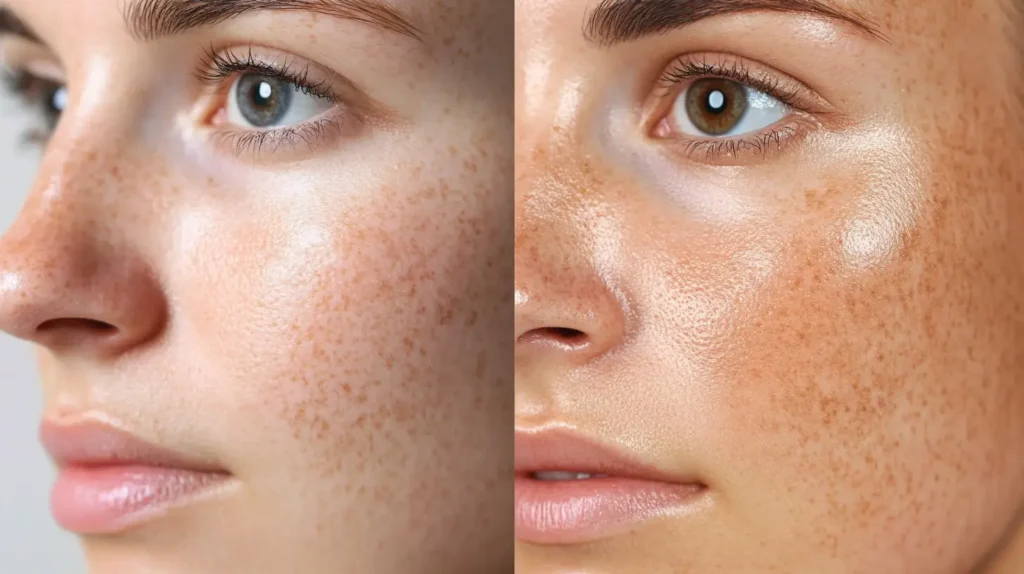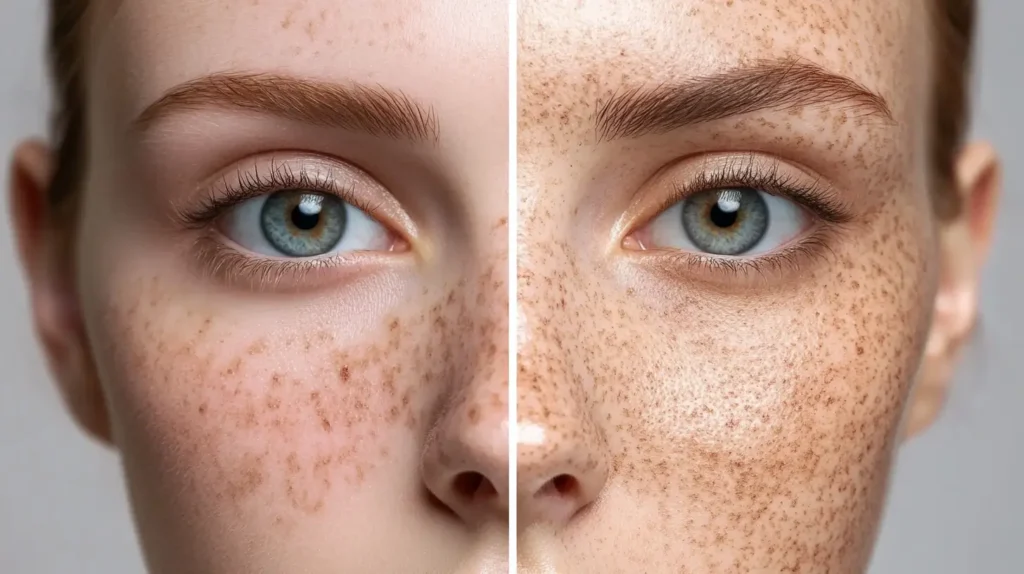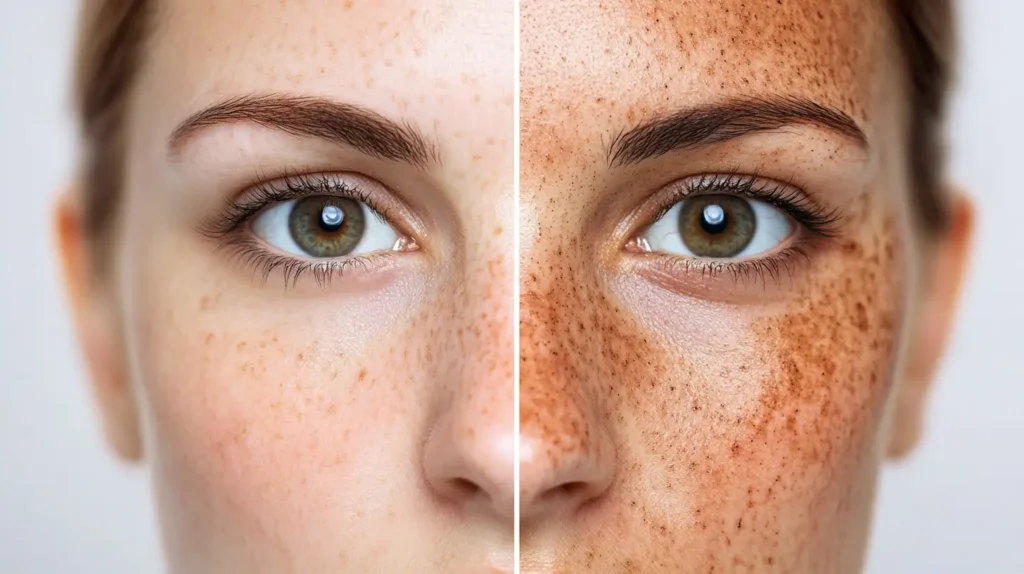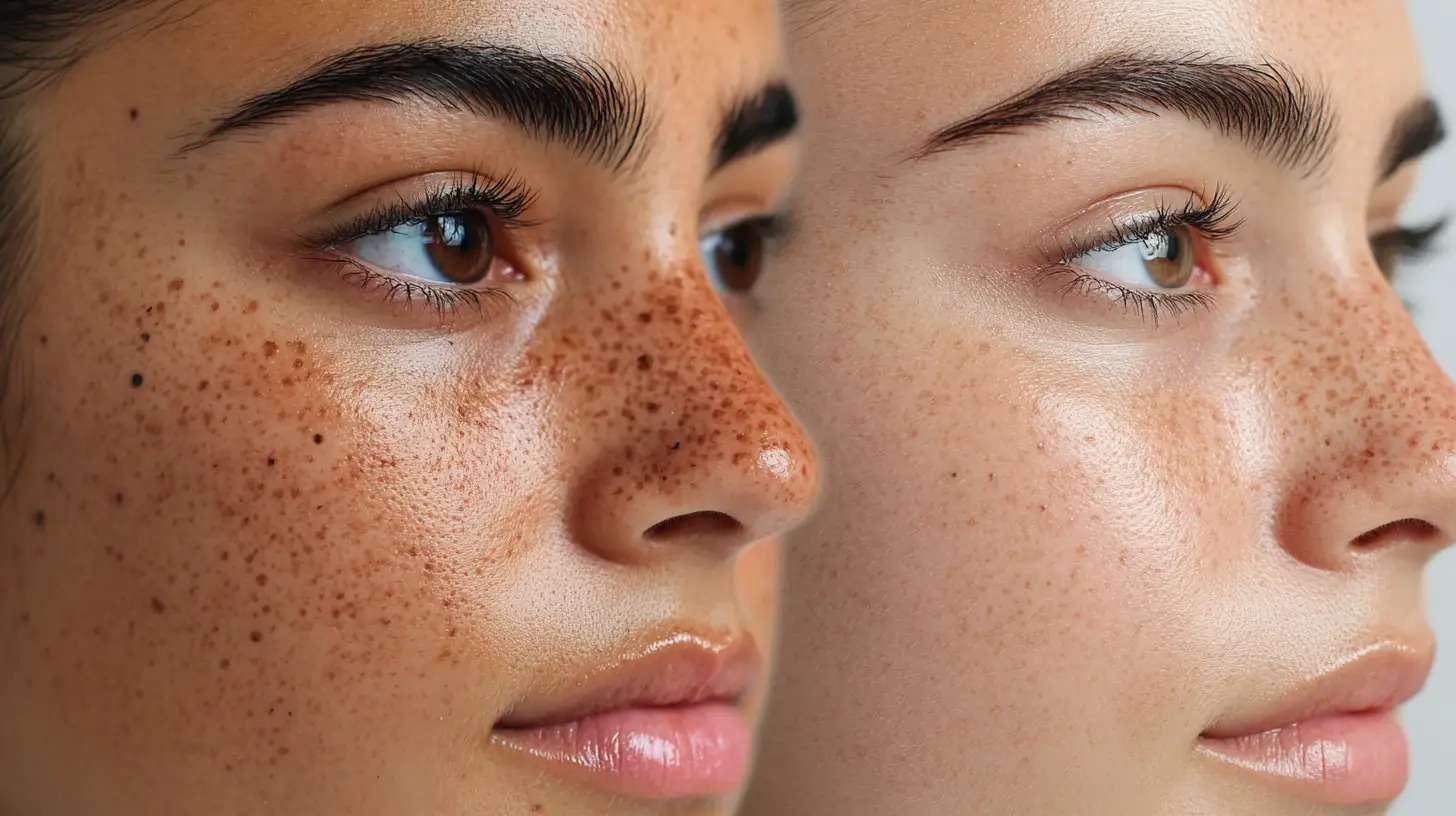7 Tips to Remove Dark Spots On Face Permanently: Achieve Clear, Even-Toned Skin
Dark spots on your face can be frustrating.
They make your skin look uneven and dull. The good news is you can get rid of them for good.
You can remove dark spots at home or with help from a doctor.
This article will show you 7 ways to fade those pesky marks. You can have clear, bright skin again with some time and care.
1: Use sunscreen with SPF 30+ daily
Put on sunscreen every day, even when it’s cloudy.
Choose one with SPF 30 or higher. This helps stop dark spots from getting worse. It also lowers the chance of new spots forming.
Apply sunscreen to your face and any exposed skin. Then, reapply every two hours if you’re outside.

2: Apply Vitamin C serum regularly
Vitamin C serum is a powerful tool for fighting dark spots. Use it daily after cleansing your face.
Pick a serum with at least 10% vitamin C. Then, apply a few drops to your skin, focusing on the dark spots.
Give the serum time to absorb before using other products. Be patient – it may take 2-3 months to see results.
3: Try glycolic acid toner
Glycolic acid toner can help fade dark spots on your face.
Apply it after cleansing in the evening. Start with a low concentration to see how your skin reacts.
Use a cotton pad to gently swipe the toner over your face. Make sure to avoid the eye area, and don’t rinse it off.

4: Use aloe vera gel for soothing
Aloe vera gel can help soothe dark spots on your face.
Apply fresh aloe gel or a store-bought product directly to the affected areas.
Use it twice daily, in the morning and before bed.
Then, gently massage the gel into your skin and let it absorb.
Aloe vera may help fade dark spots over time by promoting cell turnover and skin regeneration.
5: Consult a dermatologist for laser treatment
Laser treatment can be a good option for removing dark spots on your face.
It uses focused light to break up pigment in your skin.
You’ll need to see a dermatologist for this treatment. They can assess your skin and recommend the best type of laser.
Results vary, but many people see improvement within 4-6 weeks after treatment. Multiple sessions may be needed for stubborn spots.
6: Incorporate kojic acid into skincare routine
Kojic acid can help fade dark spots on your face. Add it to your routine slowly, starting with a low-concentration product.
Use kojic acid serums or creams once a day, preferably at night. Apply a small amount to clean dry skin before moisturizing.
Always wear sunscreen during the day when using kojic acid. This protects your skin from increased sun sensitivity.
7: Use retinol cream at night
Retinol cream can help fade dark spots on your face. Apply it before bed to give it time to work overnight.
Start with a low concentration and use it 2-3 times weekly. Then, gradually increase frequency as your skin adjusts.
Make sure to always use sunscreen during the day when using retinol products.
Understanding Dark Spots
Dark spots can appear on your face for various reasons.
They come in different forms and shades. Knowing what causes them and their types can help you choose the right treatment.

Causes of Dark Spots
Sun damage is a key cause of dark spots. UV rays trigger extra melanin production in your skin.
Hormonal changes, like those during pregnancy, can lead to melasma. Meanwhile, acne often leaves behind post-inflammatory hyperpigmentation.
Aging and genetics play a role too. As you get older, your skin may develop age spots. Some people are more prone to dark spots due to their genes.
Certain medicines can make your skin more sensitive to sunlight. This can result in dark patches. Skin injuries or inflammation can also cause spots as your skin heals.
Types of Skin Discoloration
Freckles are small, light brown spots that often appear in clusters. They’re usually genetic and darken with sun exposure.
Melasma shows up as larger, patchy areas of darkened skin. It’s common on the cheeks, forehead, and upper lip.
Age spots, also called liver spots, are flat brown, black, or gray spots. They typically appear on areas exposed to the sun.
Post-inflammatory hyperpigmentation occurs after skin damage. Depending on your skin tone, it can range from light brown to dark purple.
Birthmarks are colored spots present at birth or appearing soon after. They can be of various sizes, shapes, and colors.
Effective Skincare Ingredients

Certain ingredients can help fade dark spots on your face. Two key components are vitamin C and retinoids.
These powerful substances work in different ways to improve your skin’s appearance.
The Role of Vitamin C
Vitamin C is a potent antioxidant that brightens your skin. It blocks an enzyme called tyrosinase, which is needed to make melanin. This helps reduce dark spots and even out skin tone.
You can find vitamin C in serums and creams. Look for products with L-ascorbic acid, the most effective form. Start with a low concentration and slowly increase to avoid irritation.
Vitamin C also boosts collagen production. This helps keep your skin firm and youthful. For best results, apply vitamin C products in the morning before sunscreen.
Benefits of Retinoids
Retinoids are vitamin A derivatives that speed up cell turnover.
They help shed old, damaged skin cells faster. This can fade dark spots and reveal fresher, brighter skin underneath.
There are different types of retinoids. Over-the-counter options include retinol and retinaldehyde. You can also get stronger prescription versions from your doctor.
Start using retinoids slowly, like once or twice a week. Gradually increase as your skin adjusts. Apply at night, since sunlight can make retinoids less effective.
At first, retinoids can cause dryness and peeling. Use a gentle moisturizer to help your skin adapt.







